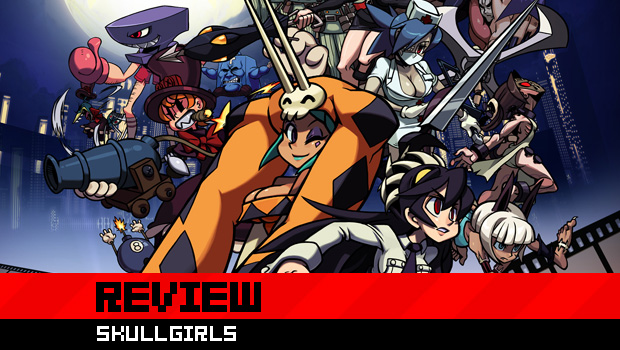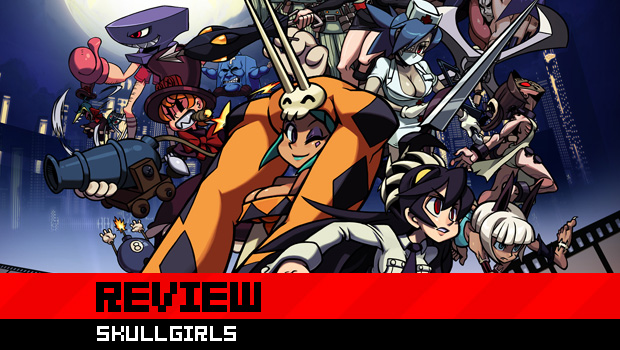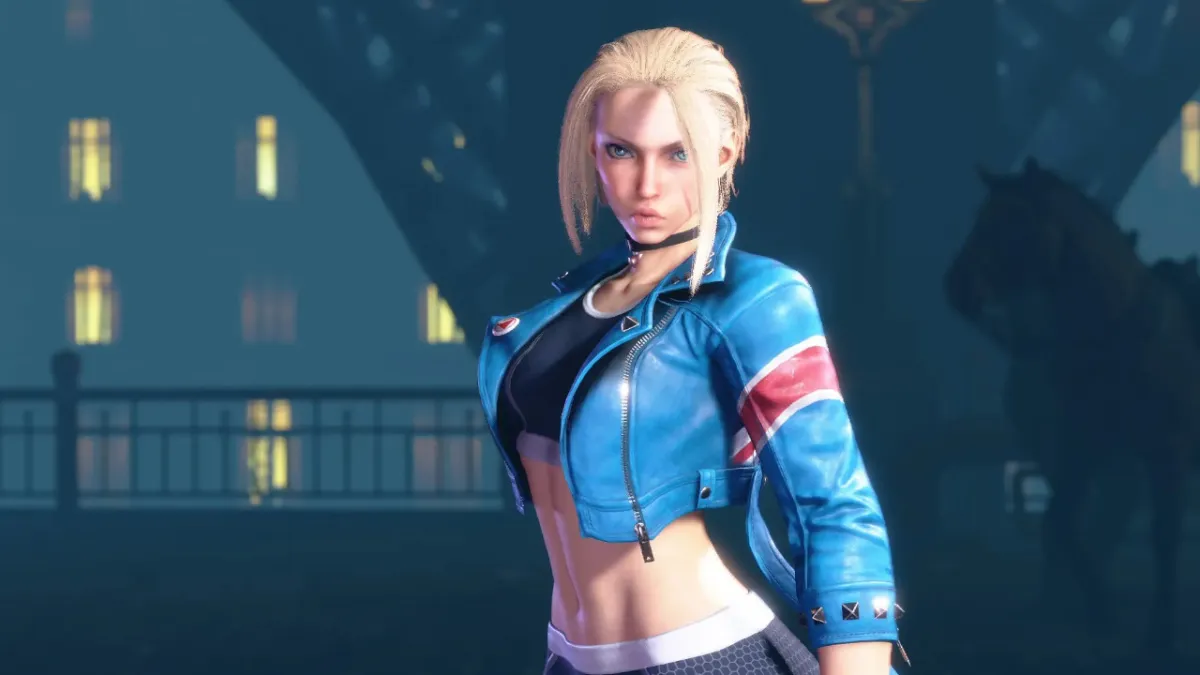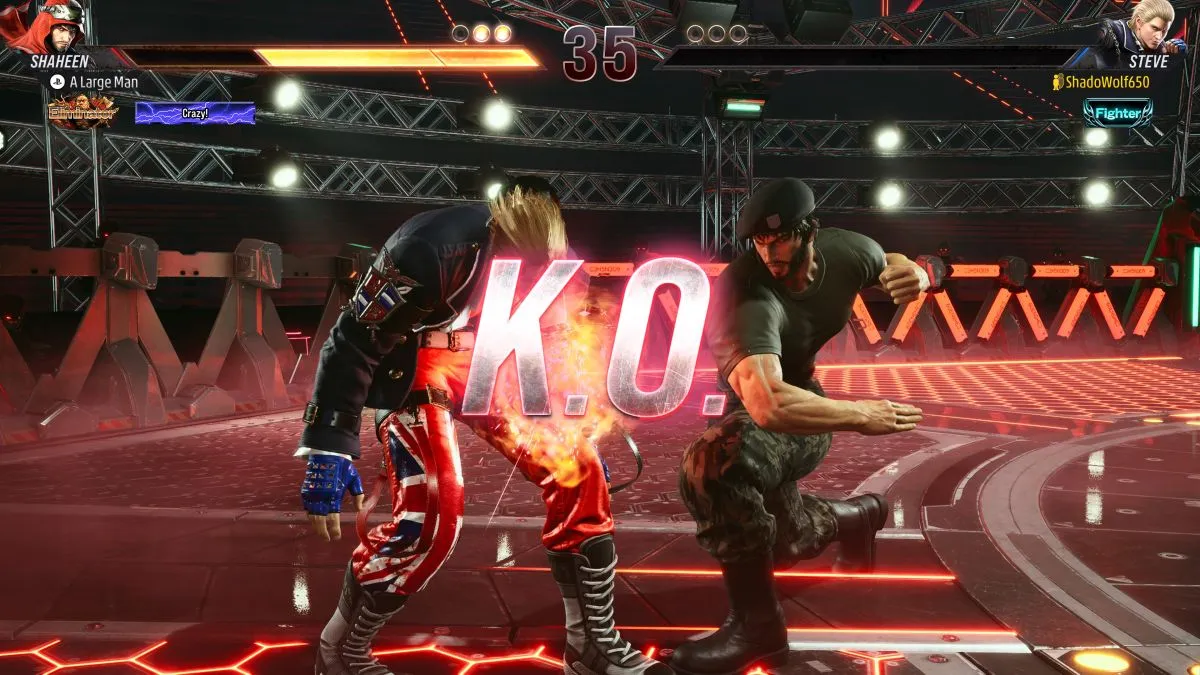Skullgirls is a downloadable fighting game in a world brimming with big-budget, disc-based games from the same genre. Holding it to the same standards might seem unfair, but expectations from fighting game players are the same regardless of how the game is delivered. That being said, Skullgirls nails some aspects that the big names seem to have overlooked while simultaneously overlooking others.
Mike “Mike Z” Zaimont is one of the project leaders of Skullgirls and is also a well-known player in the fighting game scene. In fact, this is the same guy who taught many “weak American minds” like myself how to play Iron Tager in BlazBlue! Needless to say, he knows what he likes in fighting games, so having such a strong influence in the development of one definitely yielded some interesting results.

Skullgirls (PlayStation Network [reviewed], Xbox Live Arcade)
Developer: Reverge Labs
Publisher: Konami, Autumn Games
Released: April 10, 2012 (PSN) / April 11, 2012 (XBLA)
MSRP: $14.99 (PSN) / 1200 Microsoft Points (XBLA)
Skullgirls revolves around an artifact known as the Skull Heart. Legend has it that the Skull Heart is able to grant a single wish to any woman who obtains it. The catch is that if the woman in question is impure at heart, she will be transformed into the Skullgirl and her wish will be corrupted. Each of the eight characters has her own motivation as to why she wants to reach the Skull Heart, revealed by playing through the game’s Story Mode.
Story Mode consists of six one-round fights, culminating in a boss fight finale. Unfortunately, the boss falls back on the traditional fighting game boss tropes of being incredibly difficult and laborious. The boss cannot be staggered by your hits, meaning that she can perform moves even while you’re attacking her. What will inevitably end up happening is that you’ll find one specific move to spam over and over again on her various forms in order to do a lot of damage quickly, which becomes really tedious really fast.
The stories themselves are very well crafted, largely because of the ingenious and unique character designs. Although the large-breasted, voluptuous characters might grab your attention the most, they only represent half of the cast. In fact, the characters are much more developed than their outward aesthetics may let on. Dialogue in between some of the fights helps to demonstrate each character’s traits and allows you to really understand each character’s personality.
Unfortunately, pre-fight dialogue sequences are intermittent at best, and as such, many of the fights are not contextualized. Sometimes there will be fights following the opening cutscene with no apparent rhyme or reason to them. The fights that are contextualized make the story come alive and make the others feel flat by comparison. Painwheel’s story in particular is extremely well done, exploring some darker themes of the game’s lore.
At first, I thought that maybe the inclusion of a boss fight that falls back on the same old fighting game boss tropes was a smart and clever juxtaposition when contrasted against the fresh and interesting mechanics at play. However, as I played through more story modes, I quickly realized that even if it was intended, it is still a chore to fight against the bosses. Playing through on either the Easy or Sleepwalk difficulty is your best bet to get the most enjoyment out of the story.
An Arcade Mode is also included, though there isn’t much to take away from it. You get to choose whichever characters you like, but it ends with the same annoying and tedious boss as the Story Mode; unless you really want to unlock an extra color palette for your character, there’s no real reason to play through Arcade Mode. Is it asking too much to have a boss fight that actually challenges my skills and performance given the game mechanics at hand, rather than an exercise in irrelevant monotony?

The characters themselves in Skullgirls exhibit some of the most interesting and unique character designs in fighting games. For example, take Ms. Fortune, a cat lady with detachable limbs who says cat puns that would make Bubsy proud. To name a few more, there’s also Peacock, modeled after cartoons from the 1940s; Filia, with a parasitic and personable hairstyle; and Cerebella, who has two gigantic arms on her hat.
Each character has an extreme sense of personality, further elaborated upon in her respective story modes. They all also have a unique playstyle, ensuring that you will never get a sense of déjà vu while playing different characters. Though you might be put off by the small roster, the uniqueness of each character goes a long way in making it feel more diverse than most games with dozens of characters.

The first thing to explore in any fighting game is the tutorial — Skullgirls has one of the absolute best tutorials seen in a fighting game. There are 17 lessons for you to go through, ranging from basic movement and attacks to defending against mix-ups and throws. The game does a great job of teaching you what a mix-up is before teaching you what to do with them. Skullgirls isn’t afraid to throw a large amount of text at you in order to teach you the various jargon surrounding fighting games, so make sure to have those reading glasses handy.
What would normally have to be looked up online is now easily accessible in Skullgirls‘s tutorial mode. Players who aren’t so familiar with a lot of the technical terms surrounding fighting games will likely emerge from the tutorial with a firm grasp of many of the techniques used by top-level players. Things like jump cancelling, off-the-ground (OTG) attacks, and hit-stun are all well-explained, and the corresponding trials are often sufficient enough to reinforce the idea. There is one strange omission, however: bursting, or breaking out of a combo, is not explained at all in the tutorials or in any of the menus. It’s a very important aspect of the game’s mechanics, so it’s a bit confusing as to why there’s no mention of it.
Unfortunately, the Training Mode is not as complete. It serves its most basic purpose of allowing you to practice moves and combos on a dummy character and even has some really interesting options, but most of the dummy options that people have come to expect over the years are mysteriously absent. The training dummy cannot be set to auto-block, always jump, always crouch, or be in any other state besides standing. Many players use these options in order to test various moves or combos while the opponent is in a different state, so their absence is quite the oversight. There are some other great options included, however, like being able to view hitboxes and a hit-stun bar, which should appease some of the more hardcore fans.
There is also an issue concerning the in-game move list: there isn’t one. The title screen lets you know that you can find a movelist over on this website, but it is otherwise inaccessible. This is perhaps the most bizarre omission, as no one should have to constantly be checking their computer or phone in order to learn a character’s abilities. This, along with the other omissions mentioned above, has been recognized by the development team and a patch has since been promised, but as of this review, they remain absent.

The actual fighting mechanics of Skullgirls are excellent. With the exception of Story Mode, you’re able to choose among playing as one, two, or three characters at once. It’s a system that Capcom vs. SNK had back in the day, and it’s a shame that it has taken this long to bring back. If you choose to play as a solo character, you’ll have more health and do more damage, but you’ll lack the ability to call in your partner for an assist move, which has the potential to save you in sticky situations. Conversely, choosing a team of two or three grants you that assist option, but you’ll have less health and deal less damage.
Team customization is enhanced by the ability to assign custom assists. In a game like Marvel Vs. Capcom 3, there are three preset assist moves to choose from for each character. Skullgirls takes this a few leaps and bounds further by allowing for literally anything to be assigned as an assist move. There are two presets to choose from, but some of them are mainly there to showcase what you can do instead of actually being useful. When you choose custom assists, you simply input the command you want the character to do and accept. The game will even display the name of the move you input, just to make sure you got what you wanted.
Skullgirls uses a six-button control scheme like Street Fighter, though the actual gameplay has more of a less-frantic Marvel Vs. Capcom vibe. There are air dashes and double jumps, but not every character has the ability to do both. Combos don’t require the precise timing demanded of you from games like Super Street Fighter IV, and each character has a really simple combo that spans from light to heavy attacks, though it’s up to the player to discover it.
Then there’s the Infinite Prevention System, or IPS. This is a unique combo mechanic that will prevent any infinites from appearing in Skullgirls, ever. If the IPS detects a combo chain that starts with the same move a couple of times consecutively, it will allow the victim to burst out of the combo and push the opponent away. This not only prevents infinites but encourages players to include more variation in their combos if they want to extend them. It is an amazing system that goes a long way to shape this game into something unique.

The online component of Skullgirls is very coherent and does what it sets out to do quite well. Online play uses GGPO, a peer-to-peer connection that allows you to set your own input delay before a match. Luckily, the game recommends a number range to choose from based off of your opponent’s ping, for those of us who would otherwise have no idea what to set it to. When GGPO is working, it’s magic — lag is barely noticeable and good times will be had by all. However, if either you or your opponent isn’t paying attention and sets the input delay incorrectly, gameplay can be a laggy mess.
Both ranked and unranked one-on-one matches are available, though there are no lobbies for three players or more in unranked mode. Ranked matches will pair you up with someone around your skill level for a quick fight. You are placed in a numbered “tier” based off of your past record, but unfortunately right now on PS3, once you get to the higher tiers, you may be searching for an opponent for a very long time, as it doesn’t expand the search to other tiers. This is a known issue and is planned to be fixed, but for now, it’s better to play around in unranked matches.
Unranked matches work a lot like ranked ones, although your tier rank won’t be affected and you have the ability to have a rematch with the player after the fight. You can search for a specific type of room, like Beginner, Practice, or Expert, but if your search is too precise, you may not find anything at all.

Skullgirls features hand-drawn art by Alex Ahad and flaunts the most animation frames per character to ever be displayed in a fighting game, making for one of the prettiest fighters to watch in action. All the unique character design in the world wouldn’t matter if the art wasn’t good enough to back it up; thankfully, each character’s personality truly shines through the artwork.
Even the backgrounds are a sight to behold. Each stage tells its own story, expanding the universe a bit more with ancillary characters not found in the Story Mode. Reverge Labs has done a superb job of creating a backstory for most of these characters that will hopefully be expanded upon at a later date. The Skullgirls universe is one that I would personally like to delve deeper into.
The music team includes Vincent Diamante, the composer behind Flower, as well as Blaine McGurty and Brenton Kossak. However, the biggest name on the list is Michiru Yamane, whose work may be familiar to you if you’ve played any of the Castlevania games released after Symphony of the Night. The soundtrack is very jazzy and often bouncy and relaxing, something that’s invaluable for when you get your butt handed to you in an online match. The credits music, in particular, is fantastic — trudging through the final boss is totally justified once the credits tune starts playing.

There are a ton of small touches that really bring the package together and make it clear that Mike Z and company are big fighting game fans rather than some random executives. Most of the motions for special moves are simplified to either a quarter-circle or dragon punch motion. Even the 360 motion is made easier, as the game actually detects when you’re trying to rotate the joystick and will prevent you from jumping and ruining the move. It’s about damn time.
Skullgirls will be a bit of a mixed bag depending on who’s playing the game. For new players, it has what might be the best tutorial on the scene as well as a ton of small touches to round out the experience, but still lacks an in-game movelist and falls back on tedious fighting game bosses. Experts will find some of the best fighting game mechanics around, but will likely be frustrated by the lack of Training Mode options.
Demonstrating their complete dedication to the game, Mike Z and the team over at Reverge Labs have become aware of the issues that Skullgirls currently has and are planning to patch them. Downloadable characters are also likely on their way, showing even more planned support that will help keep this game afloat.
It has its issues for sure, but Skullgirls exemplifies the beauty that can happen when people who absolutely love the fighting game genre are put in charge of a title. Skullgirls has quite a few signs of rushed development, but at its core, it is one of the most well-thought-out and impressive fighting games on the market right now. Future games of the genre are advised to take notes.





